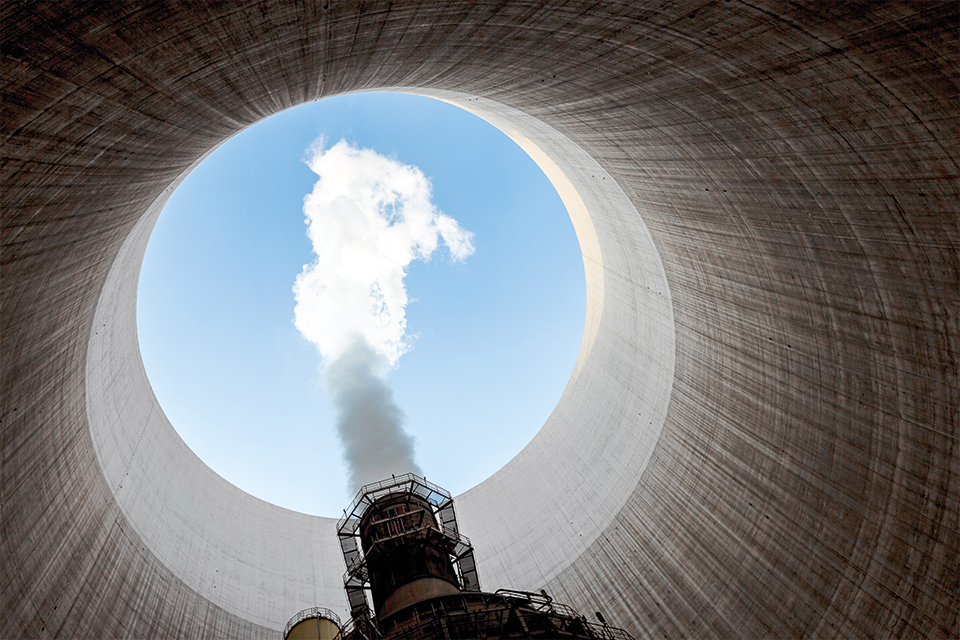2023-05-05
Continuous Emissions Monitoring – What, Why, and How?

In an ideal world, combustion merely gives emissions of water and carbon dioxide (CO2). Water is a non-issue while CO2 nowadays is looked upon with concern, giving its key role in the global climate changes. However, the issues with emissions do not stop there.
The thermal processes also generate nitrogen oxides, primarily NO. Depending on the fuel composition, the type of combustion process, and in some cases the flue gas cleaning process, there can also be a wide range of other gaseous pollutants in the flue gas such as carbon monoxide (CO), sulfur dioxide (SO2), ammonia (NH3), hydrogen chloride (HCl) and fluoride (HF), mercury (Hg), and dioxins. Each type of pollutant comes with its own impact on health and environment, at its own threshold levels.
Legislation to Guide and Limit
Almost all parts of the world nowadays have laws, permits and other legislation to control emissions from large combustion sources, whether located at power plants, hazardous waste incinerators, refineries, cement industries, or otherwise.
An example of a framework for such legislation is the European Union Industrial Emissions Directive, the IED (2010/75/EU). The IED itself is a rather compact directive, but it is essentially just referring to Best Available Techniques (BAT), with references (BREFs) and conclusions (BATCs). There are some 30 different BREFs, each aimed at a specific type of industry. Each BREF contains detailed discussions on what can be done with respect to limitation of emissions. It also suggests emission limits to a large number of pollutants.
It is then up to national authorities within the EU to set actual limits to individual industries, based on the guidance given by the respective BREF and its BATC. The BREFs are revised regularly to keep the knowledge base and expectations on emission limits up to date.
Sampling and Calculation
Accordingly, it is the legislation that tells an industry which and how much pollutants it is allowed to emit. For the industry to prove that it stays below the limits, there are also detailed requirements on monitoring of the pollutant emissions. In some cases, it has been ruled that it is sufficient to sample the flue gas regularly and then assume similar emission levels for all other time. Sometimes not even that is necessary. If the fuel quality and combustion process are stable, it might be sufficient to just analyse the fuel composition now and then and calculate the resulting pollutant emissions based on fuel flow.
Continuous Monitoring
However, it is often necessary to monitor the emissions continuously, for example if the fuel composition or combustion process are expected to vary by time. Requirements on continuous emissions monitoring (CEM) also come with requirements on monitoring equipment being approved by test institutes and being maintained and calibrated regularly. Here, the European Union BATCs rely heavily on European standards such as EN 14181 and EN 15267, but similar requirements can be found in many other parts of the world.
How to Source a CEM System
So, plant operators often find themselves in need to source a CEM system (CEMS). It should preferably have a track record of low total costs of ownership and hassle-free maintenance.
There are generally two types of CEMS available: “extractive” where samples of the flue gas are led to the gas analyser(s), and “in-situ” where the fundamental detection happens in the actual flue gas, without any extraction. There are quite often some five to ten different gases to monitor, and there is then often a choice between a set of single-gas analysers, and a single or perhaps two multi-gas analysers.
Altogether, the sourcing can be quite a challenge. However, seek advice from renown suppliers and seek references, and the preferred sourcing option will probably become evident. Why not start with OPSIS?
We provide both extractive and in-situ multi-gas analysers for both CEMS and process control applications. Thousands of systems are in operation all over the world. Feel free to contact us or our representatives, and we will be happy to provide you with advice on appropriate CEM system solutions for your needs.
